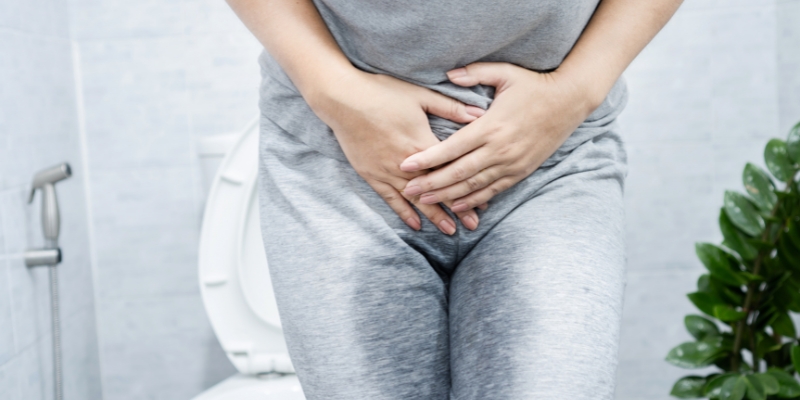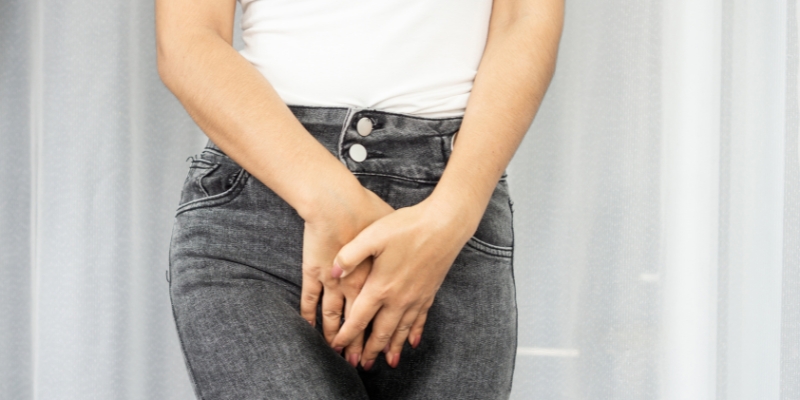Exploring the Different Types of Incontinence
Oct 07, 2023 By Madison Evans
Incontinence affects millions globally, sometimes hidden in shame. It's underdiagnosed and undertreated despite its influence on quality of life. Recognizing that incontinence has no one treatment helps you understand and manage it. There are various varieties of incontinence, each with its origins, symptoms, and treatments. This page explores the many types of incontinence to help individuals afflicted and encourage open discussion about this widespread but frequently neglected health concern.
Incontinence may afflict anybody, regardless of age or medical condition. Understanding the various forms of incontinence and its features helps people and healthcare professionals identify solutions and enhance quality of life. This page discusses each form of incontinence, including causes, symptoms, and remedies.

Stress Incontinence:
Stress incontinence, which happens when the bladder is compressed when sneezing, laughing, or lifting, is common. Unintentional urine leakage may result. Weak pelvic floor muscles from childbearing, obesity, or medical issues are common reasons. Symptoms include leaking during exercise. Physical, urodynamic, and imaging tests are used to diagnose. Lifestyle adjustments, pelvic floor exercises, and surgery are treatment possibilities.
Stress incontinence may cause everyday pain and mental misery. However, this form of incontinence is very curable, and many people may reduce or eliminate symptoms with the correct treatments. Stress incontinence sufferers and their doctors must understand the reasons and treatments for it to make educated choices.
Urge Incontinence:
Urge incontinence is characterized by a sudden, acute need to pee followed by involuntary bladder contractions that leak. Neurological abnormalities, infections, or bladder irritants like coffee or alcohol may cause this problem. Urinating often and with an uncontrollable desire are symptoms. Physical examination, urinalysis, and urodynamic tests may diagnose. Behavioral therapy, medicines, nerve stimulation, and surgery are available.
The sudden, overwhelming need to urinate may be difficult to regulate, making urge incontinence a significant life disruption. Urge incontinence sufferers may enhance their quality of life with the correct diagnosis and treatment. This section discusses urge incontinence causes, diagnosis, and treatment options to assist people to restore bladder control.
Overflow Incontinence:
If the bladder doesn't drain correctly, it leaks or drips. An enlarged prostate in males or diabetes-related nerve damage might cause this. Continual dribbling, feeling that the bladder is never empty, and trouble urinating are common symptoms. Physical, urinalysis, and imaging are used to diagnose. Depending on the reason, medication, catheterization, or surgery may be used.
Management of overflow incontinence generally requires a thorough investigation to determine the reason. Diagnosing and treating the cause—an enlarged prostate, nerve injury, or other bladder emptying issues—is crucial. Overflow incontinence may be managed and improved with effective therapy. This section discusses overflow incontinence causes, diagnosis, and treatment options to help patients and doctors make educated choices.
Functional Incontinence:
It is caused by physical or cognitive limitations that make it difficult to use the restroom. Older persons with mobility or cognitive difficulties typically have this incontinence. Due to physical or cognitive limitations, symptoms may include difficulties going to the restroom. Assessments of physical and cognitive ability are used to diagnose. Physical therapy, assistive equipment, and caregiver assistance address the causes of functional incontinence.
Functional incontinence is typically caused by non-urinary reasons, making it difficult to manage. Functional incontinence may need multidisciplinary treatment from doctors, physical therapists, and caretakers. Treating the causes and assisting functional incontinence patients may improve their quality of life. This section discusses functional incontinence causes, diagnostic techniques, and treatment options, stressing the need for a comprehensive approach.
Mixed Incontinence:
Mixed incontinence usually involves stress and urge incontinence. Mixtures of symptoms are prevalent, complicating diagnosis and therapy. Symptoms differ by incontinence type combination. A thorough medical history, physical exam, and diagnostic testing are needed to diagnose. Multiple therapy may be used to treat each form of incontinence.
Mixed incontinence needs a customized strategy to manage each form of incontinence. Healthcare practitioners help patients diagnose incontinence, define its varieties, and create a treatment plan that addresses stress and urge. Knowing the intricacy of mixed incontinence and the treatment choices, patients may work with their doctors to discover solutions and restore bladder control.
Neurogenic Incontinence:
Neurogenic incontinence results from nerve system damage: decreased bladder control. Multiple sclerosis, stroke, and spinal cord injury may cause this. Urinary retention, bladder control loss, and trouble starting urination are symptoms. A complete neurological and urodynamic assessment is typically required for diagnosis. Medication, catheterization, or surgery may treat the neurological problem.
Neurogenic incontinence is generally caused by neurological problems that need continuing treatment, making it distinctive. Managing the neurological disease and symptoms is necessary for effective therapy. Healthcare professionals are crucial in coordinating care and creating a personalized treatment plan. Individuals and healthcare teams may enhance bladder function and quality of life by knowing neurogenic incontinence and its treatment options.
Treatment Approaches:
Medicines may help manage different incontinence kinds. Anticholinergic drugs are often recommended to calm hyperactive bladders and minimize urge incontinence. However, alpha-blockers or 5-alpha reductase inhibitors may cure prostate enlargement-related overflow incontinence in males. These drugs relax urethral muscles to improve urine flow. Medication appropriateness varies on incontinence type, health, and side effects. A doctor will carefully consider these criteria to select the best drug and dose. Drugs may help but work best with additional treatments, including behavioral therapy and pelvic floor exercises.
Behavior therapy and lifestyle modifications are essential to incontinence control. Stress and urge incontinence patients generally turn to them first. Bladder training might help you go longer between toilet trips and restore control over pee. Urgency and leaking decrease as people learn to recognize and react to bladder cues. Lifestyle changes are also significant. These might include lowering caffeine and alcohol consumption and keeping a healthy weight to relieve bladder strain. Lifestyle changes include proper hydration, avoiding allergens, and planned toilet breaks. These non-invasive methods allow incontinence patients to manage their condition and improve symptoms and quality of life.

Managing Incontinence in Daily Life:
Incontinence supplies are helpful for incontinence management: protective undergarments, absorbent pads, and adult diapers. The correct product depends on incontinence type, severity, comfort, and lifestyle. Modern incontinence solutions are inconspicuous, pleasant, and successful at keeping people dry.
To find the right items, see a doctor or professional. Proper product selection and usage may boost confidence and allow everyday activities without shame or pain.
Incontinence patients must maintain skin health. Urine and feces may cause skin irritation, redness, and disintegration over time. Preventing these hazards requires good hygiene. This involves washing with mild soap and water, patting the skin dry, and protecting it with a barrier lotion or ointment.
High-quality, absorbent incontinence products can keep skin dry and decrease skin concerns. Maintaining skin health requires regular skin checks and rapid irritation treatment. These methods may reduce the skin and health impacts of incontinence.
Conclusion:
Incontinence is a complicated problem that affects all ages and backgrounds. Identifying the kind of incontinence is essential to diagnosis and therapy. Healthcare experts can assist, so don't hesitate to ask. We seek to raise awareness, decrease stigma, and encourage open dialogues about incontinence, a common and controllable health issue.
Management of incontinence symptoms improves general well-being and quality of life. Healthcare professionals, caregivers, and people may collaborate to manage incontinence and improve everyday living with knowledge and support. We hope this post helps bladder health seekers find answers and direction.







